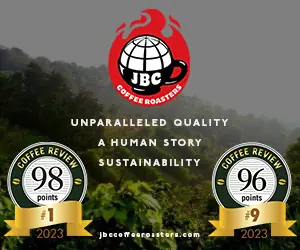Courtesy of Kenneth Davids, 21st Century Coffee: A Guide
Coffee from the Dominican Republic is occasionally called Santo Domingo after the country’s former name, perhaps because Santo Domingo looks romantic on a coffee bag and Dominican Republic does not. Dominican coffee has experienced neither the turbulent history of Haiti coffee nor the success of Jamaica Blue Mountain. The specialty coffee world has not paid a lot of attention to the Dominican Republic, particularly in recent years. Nevertheless, terroirs generally are excellent, with relatively high growing elevations, most trees are the respected Typica variety and most coffee is produced by small holders in shade without chemicals.
Historically, the problem with Dominican coffee has been the quality of the wet processing and drying. The prevalence of Typica-related varieties and medium to high growing elevations has tended to produce a classic Caribbean-style cup: full mouthfeel, quietly lively acidity and a familiar though complete set of aroma and flavor notes. Such classic cups are not forgiving of processing taint, however, and mild taints, particularly a shadow mustiness, appear all too typical with Dominican coffees.
Dominican Dilemma
You could say that the Dominican coffee industry suffers from a chicken-and-egg problem. It cannot establish itself in the international specialty export market because it is not consistent, but it is not consistent because it doesn’t have an export market that rewards consistency. So producers simply sell to the internal market or to blenders. And the industry is still recovering from the aftereffects of the hurricane of 1998.
Dominican Growing Regions
Coffee is grown on the slopes of four related mountain massifs. Dominican coffee authorities recognize seven official growing regions: Cibao, Barahona, Noroeste, Neyba, Sierra Sur, Sierra Occidental and Sierra Central. Currently not enough Dominican coffee reaches specialty markets for any of these regions to establish a clear identity in the specialty market. And, as is almost always the case, the immediate impact of microclimate and processing on a specific lot of coffee is probably a more important determinant of cup character than the broader, more generalized impact of growing region.
Nevertheless, traditional regional names maintain a certain informal branding power built up over the years. In the case of the Dominican Republic, the two principal names that are most likely to appear in retail bag and website descriptions are Barahona (by reputation generally high-grown, rather bright and intense but balanced) and Bani (still balanced but softer and rounder).
Dominican Republic Coffee Ratings and Reviews
Click here to view ratings and reviews of coffees from the Dominican Republic.










